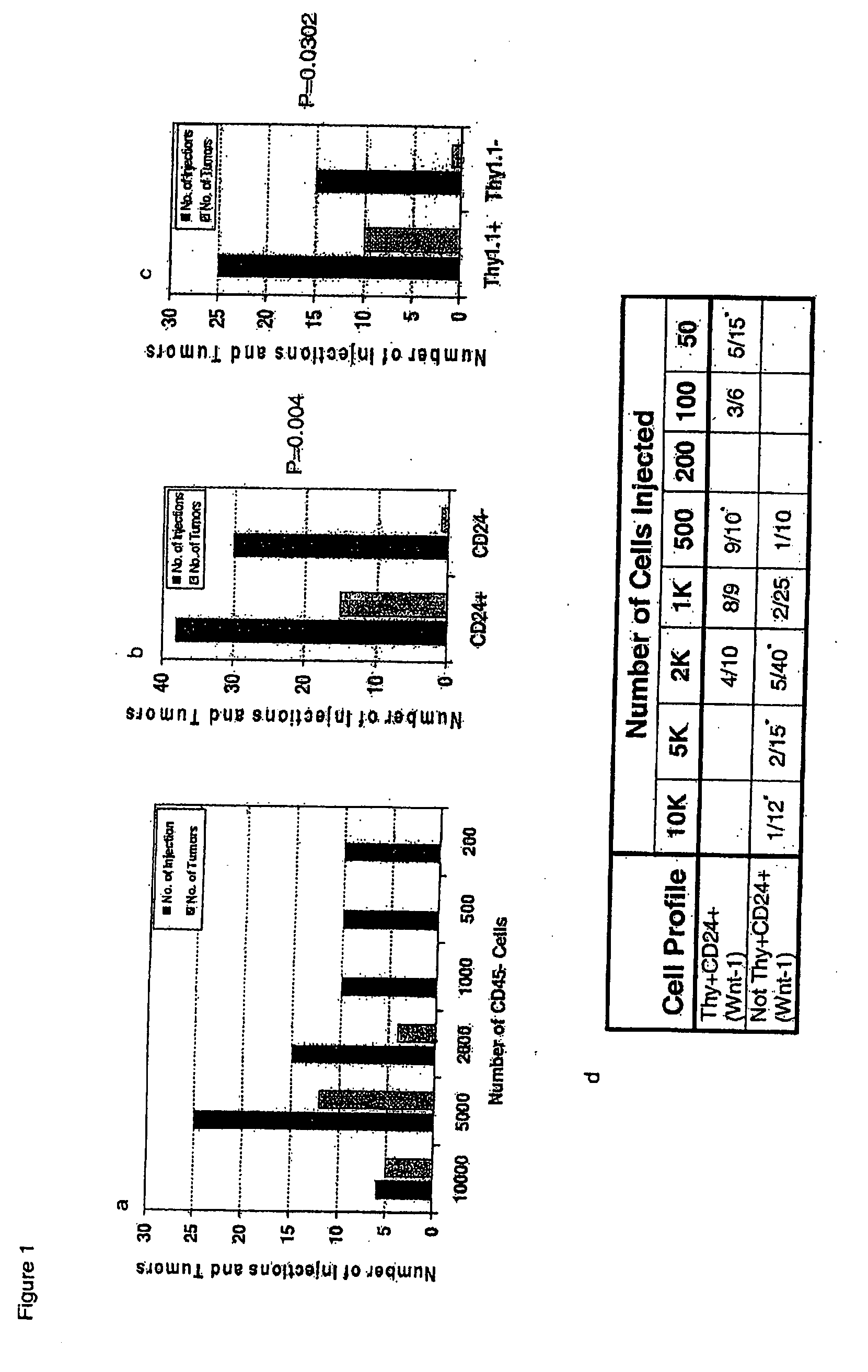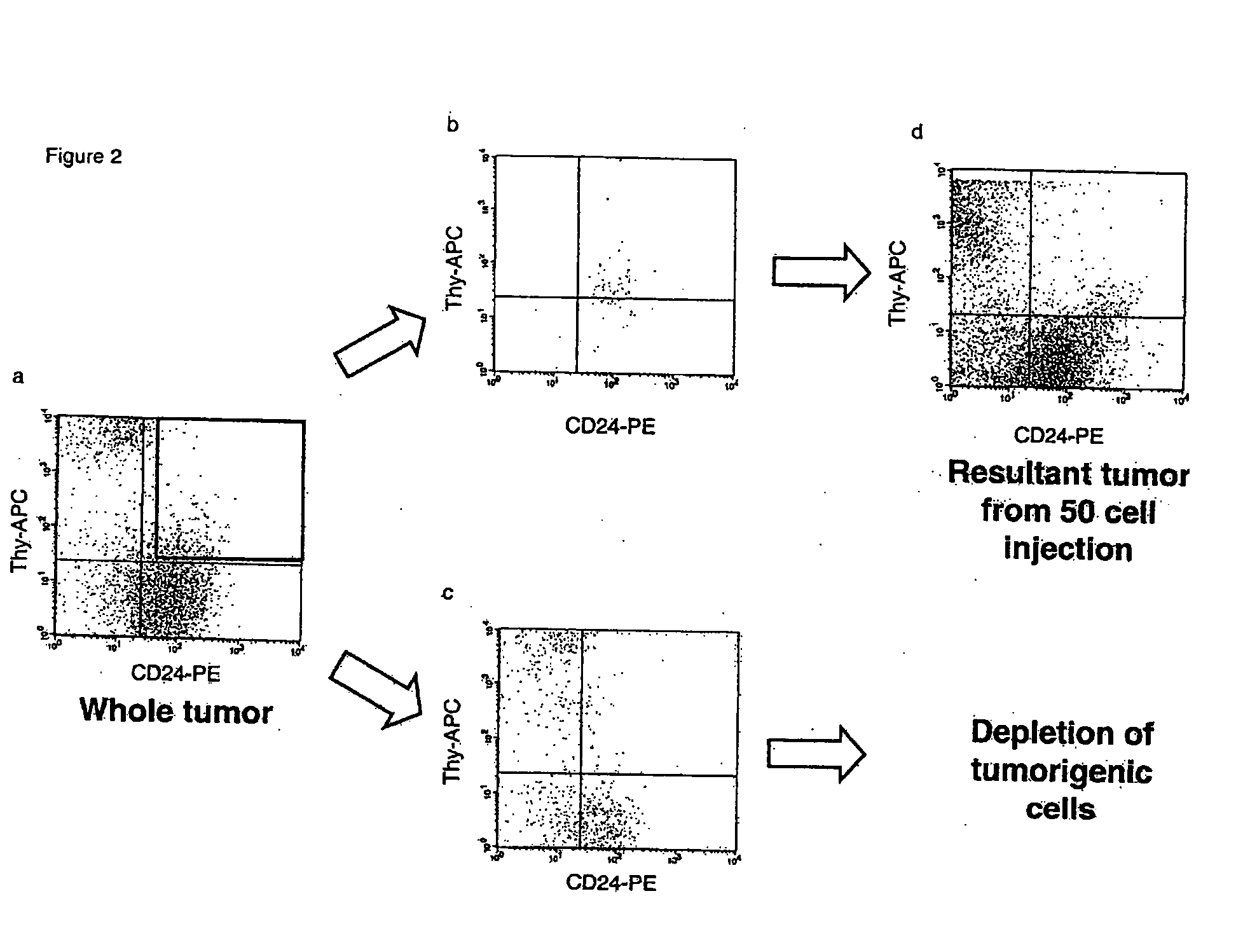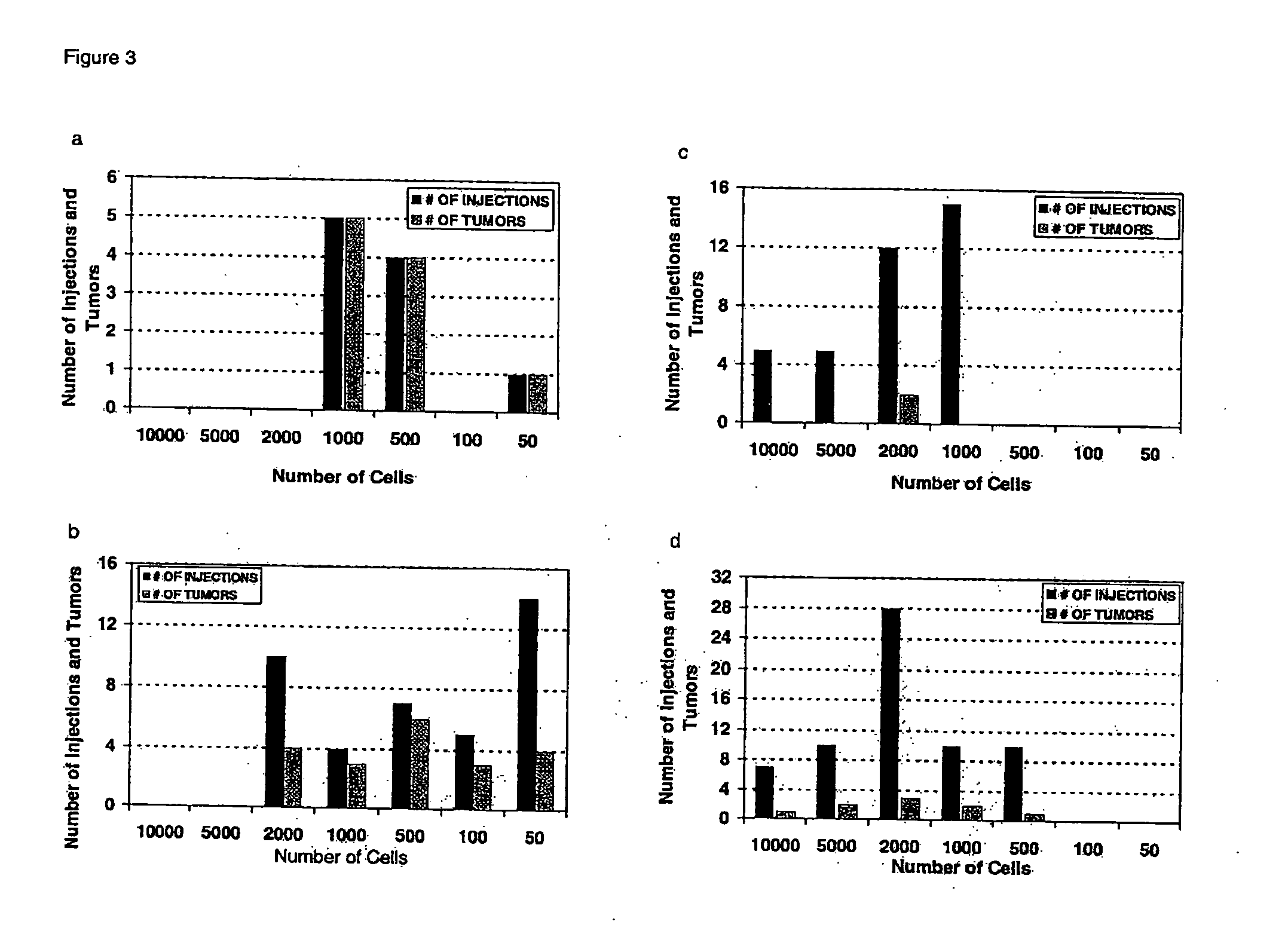Genetic characterization and prognostic significance of cancer stem cells in cancer
a cancer stem cell and gene technology, applied in the field of gene characterization and prognostic significance of cancer stem cells in cancer, can solve problems such as unlimited expansion of self-renewing cells
- Summary
- Abstract
- Description
- Claims
- Application Information
AI Technical Summary
Benefits of technology
Problems solved by technology
Method used
Image
Examples
examples
Isolation of Murine Breast Cancer Stem Cells
Tumorigenic Cells in MMTV-Wnt-1 Mice Express CD24 and Thy1
[0173] The MMTV-Wnt-1 mouse as a model to study cancer stem cells is described below. The tumorigenicity of various tumor populations was analyzed by flow cytometry using antibodies against select cell surface markers. Viable CD45 negative cells were first tested for tumorigenicity since CD45 is an established exclusion marker for hematopoietic cells. CD45− cells from the Wnt-1 tumors were injected subcutaneously near the upper nipple lines of syngeneic (FVB / NJ) mice in a limiting dilution manner. A cell dose of 1000 cells or less did not produce new tumors (FIG. 1A). At 2000 cell injections, tumors appeared with 15 injections resulting in 4 tumors. By the 10,000 cell doses, a tumor arose from 5 of 6 injections.
[0174] Sca-1, Thy-1, and CD24 were tested next as additional markers to help segregate tumorigenic from nontumorigenic populations since these markers had been previously...
PUM
| Property | Measurement | Unit |
|---|---|---|
| Fraction | aaaaa | aaaaa |
| Fraction | aaaaa | aaaaa |
| Fraction | aaaaa | aaaaa |
Abstract
Description
Claims
Application Information
 Login to View More
Login to View More - R&D
- Intellectual Property
- Life Sciences
- Materials
- Tech Scout
- Unparalleled Data Quality
- Higher Quality Content
- 60% Fewer Hallucinations
Browse by: Latest US Patents, China's latest patents, Technical Efficacy Thesaurus, Application Domain, Technology Topic, Popular Technical Reports.
© 2025 PatSnap. All rights reserved.Legal|Privacy policy|Modern Slavery Act Transparency Statement|Sitemap|About US| Contact US: help@patsnap.com



